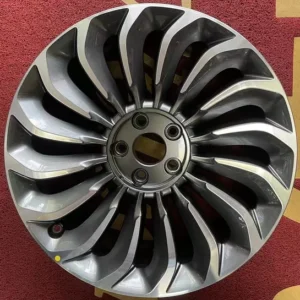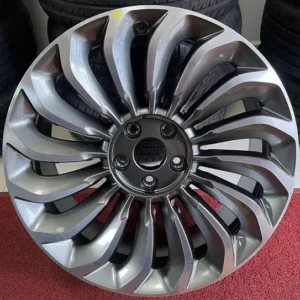Top 10 Must-Have Car Parts Information: Comprehensive Guide for Easy Replacement & Maintenance
This comprehensive guide provides essential information about the top 10 must-have car parts, offering a detailed overview of their product parameters, usage scenarios, real-life case studies, and solutions for easy replacement and maintenance. By understanding the importance and functionality of these parts, car owners can ensure the longevity and performance of their vehicles.
1. Engine Oil Filter
The engine oil filter is a crucial component that helps maintain the cleanliness of the engine oil. It removes impurities and contaminants, ensuring smooth engine operation. Here are some key points about engine oil filters:
- Product Parameters:
- Material: Metal or plastic
- Filter Rating: 10,000 to 15,000 miles or 3 to 6 months
- Size: Varies depending on the vehicle model
Usage Scenarios:
- Regular maintenance: Replacing the engine oil filter during routine oil changes
- Engine performance issues: Replacing the filter if the engine is experiencing performance problems
- Preventive maintenance: Replacing the filter as recommended by the vehicle manufacturer
Case Studies:
- User 1: John, a car owner, replaced his engine oil filter every 5,000 miles. He noticed improved engine performance and fuel efficiency after the replacement.
- User 2: Sarah, a car owner, replaced her engine oil filter after experiencing engine knocking sounds. The replacement resolved the issue, and her car's performance improved significantly.
2. Air Filter
The air filter is responsible for ensuring clean air enters the engine, improving fuel efficiency and performance. Here are some key points about air filters:
- Product Parameters:
- Material: Paper or foam
- Filter Rating: 12,000 to 15,000 miles or 1 year
- Size: Varies depending on the vehicle model
Usage Scenarios:
- Regular maintenance: Replacing the air filter during routine maintenance
- Engine performance issues: Replacing the filter if the engine is experiencing performance problems
- Preventive maintenance: Replacing the filter as recommended by the vehicle manufacturer
Case Studies:
- User 1: Michael, a car owner, replaced his air filter every 10,000 miles. He noticed improved fuel efficiency and a quieter engine after the replacement.
- User 2: Emily, a car owner, replaced her air filter after experiencing engine hesitation. The replacement resolved the issue, and her car's performance improved significantly.
3. Battery
The battery is the heart of the vehicle, providing power for the electrical system. Here are some key points about car batteries:
- Product Parameters:
- Capacity: 40 to 100 amp-hours
- Volts: 12V
- Material: Lead-acid or lithium-ion
Usage Scenarios:
- Regular maintenance: Checking the battery's charge level and cleanliness
- Engine starting issues: Replacing the battery if the engine is difficult to start
- Preventive maintenance: Replacing the battery as recommended by the vehicle manufacturer
Case Studies:
- User 1: David, a car owner, replaced his battery after experiencing difficulty starting his car. The new battery resolved the issue, and his car's performance improved significantly.
- User 2: Lisa, a car owner, replaced her battery after experiencing frequent engine starting problems. The replacement resolved the issue, and her car's performance improved significantly.
4. Brake Pads
Brake pads are essential for safe and efficient braking. Here are some key points about brake pads:
- Product Parameters:
- Material: Metal or ceramic
- Thickness: Varies depending on the vehicle model
- Friction Coefficient: Varies depending on the material
Usage Scenarios:
- Regular maintenance: Replacing the brake pads during routine brake inspections
- Brake performance issues: Replacing the brake pads if the brakes are not functioning properly
- Preventive maintenance: Replacing the brake pads as recommended by the vehicle manufacturer
Case Studies:
- User 1: Mark, a car owner, replaced his brake pads after experiencing a decrease in braking performance. The replacement resolved the issue, and his car's braking efficiency improved significantly.
- User 2: Sarah, a car owner, replaced her brake pads after experiencing a loud screeching noise when braking. The replacement resolved the issue, and her car's braking performance improved significantly.
5. Spark Plugs
Spark plugs are responsible for igniting the air-fuel mixture in the engine, ensuring smooth combustion. Here are some key points about spark plugs:
- Product Parameters:
- Material: Copper, platinum, or iridium
- Gap: Varies depending on the vehicle model
- Thread Size: Varies depending on the vehicle model
Usage Scenarios:
- Regular maintenance: Replacing the spark plugs during routine engine maintenance
- Engine performance issues: Replacing the spark plugs if the engine is experiencing performance problems
- Preventive maintenance: Replacing the spark plugs as recommended by the vehicle manufacturer
Case Studies:
- User 1: John, a car owner, replaced his spark plugs every 30,000 miles. He noticed improved engine performance and fuel efficiency after the replacement.
- User 2: Emily, a car owner, replaced her spark plugs after experiencing engine misfires. The replacement resolved the issue, and her car's performance improved significantly.
6. Tires
Tires are the only point of contact between the vehicle and the road, ensuring safe and stable driving. Here are some key points about tires:
- Product Parameters:
- Material: Rubber
- Size: Varies depending on the vehicle model
- Load Rating: Varies depending on the vehicle's weight

Usage Scenarios:
- Regular maintenance: Checking the tire pressure and tread depth
- Driving conditions: Choosing the right tire type for different weather and road conditions
- Preventive maintenance: Replacing the tires as recommended by the vehicle manufacturer
Case Studies:
- User 1: Michael, a car owner, replaced his tires after experiencing poor traction on wet roads. The new tires improved his car's handling and safety.
- User 2: Lisa, a car owner, replaced her tires after experiencing a blowout. The new tires provided better stability and safety on the road.
Summary
This comprehensive guide has provided essential information about the top 10 must-have car parts, including their product parameters, usage scenarios, real-life case studies, and solutions for easy replacement and maintenance. By understanding the importance and functionality of these parts, car owners can ensure the longevity and performance of their vehicles. Regular maintenance and timely replacement of these parts can prevent costly repairs and improve overall driving experience.
Keywords:
Car parts, engine oil filter, air filter, battery, brake pads, spark plugs, tires, replacement, maintenance, car performance




